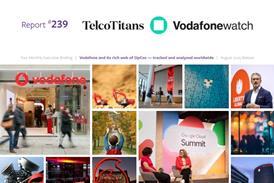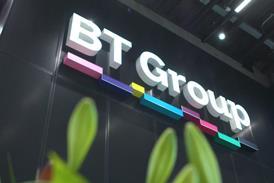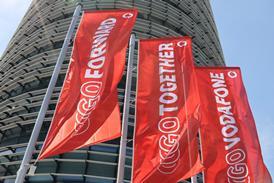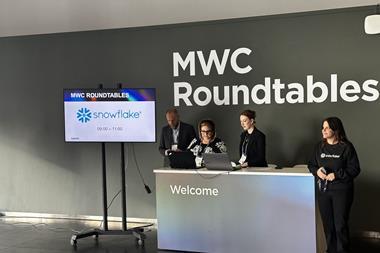- As altnets seek ways to boost financial performance and customer loyalty, the continued strong growth of the MVNO sector points to a potent opportunity for the sector to leverage mobile services, embracing convergence and multi-play.
- The rise of MVNO, facilitated by enablers and aggregators like Gamma, is making it simpler and more profitable for altnets to launch mobile offerings. This is removing the complexity and high costs historically associated with entering the mobile space.
- Proliferation of eSIM technology is another key catalyst, enabling innovative, app-based customer experiences and new brands to disrupt the market rapidly.
- Beyond the consumer sector, further opportunities exist in providing mobile backup connectivity through IoT, especially for regional altnets, as well as expanding into more complex B2B with integrated service bundles.

The environment in which UK altnets are operating is constantly evolving as market trends develop, and the move towards fibre players diversifying into mobile is one that may be switching from something happening slowly, to something on the verge of happening remarkably quickly, tying in with rapid expansion of the mobile virtual network operator (MVNO) and eSIM segments.

The fibre-mobile convergence starting flag may have been spotted with the declaration of intent from rapidly‑evolving challenger Netomnia, with other players preparing the groundwork for imminent launch, and bolt‑on services such as Community Fibre’s recent launch shows the eSIM water being tested.
Speaking to TelcoTitans ahead of his Connected Britain masterclass on the MVNO sector, Mike Mills, Managing Director for Service Providers at communications platforms enabler Gamma, suggests the reasons for the sudden acceleration are clear. Altnets that have reached critical velocity in terms of subscriber base and are now focused on driving value from established bases, and those that are still subscale need to boost revenue to provide the headroom to continue pursuing their business cases.
“ ARPU-maximisation and optimising customer lifetime management are critical for the sector, and adding mobile plays to their portfolios is now a compelling way for altnets to enhance their value propositions. ”
Mills.
While the fibre sector is evidently changing fast, Mills sees the ongoing restructuring in the adjacent mobile sector as feeding into the opportunity for change among altnets. He cites the Vodafone and Three UK merger as part of a wider opportunity for customer acquisition in the mobile space, with enforceable regulatory requirements linked to the deal meaning a wash of network capacity is swirling.
MVNOs are ascendant across Europe and the UK.
While the customer base for MNOs is barely growing, if at all, research last year from CCS Insight guided that the UK MVNO sector expanded at a rate of around 8%. This fits with predictions from Juniper Research that shows MVNO subscriber growth outpacing MNO growth over 2024–2029, with the latter analyst firm even more upbeat with a forecast that MVNO market share will reach 37% over the period (CCS envisages 24%–33%, dependent on inclusion of MNO budget brands). SIM-only and eSIM volumes are also powering up.
Mills also sees the prospect of new mobile revenue streams appealing to private equity backers of altnets not currently in a position to exit investments, but seeking ways to achieve and then maximise a return on their investment.
There is considerable nuance in the MVNO options available to altnets.
Mills explains that while mobile offers a clear way to enhance propositions, there is an array of approaches that can be taken to create differentiation, arguing that the perception of MVNOs as complex and low‑margin businesses is a dated and a misconception.
He asserts that introducing mobile can be powerful when creating more rounded customer portfolios that make the altnet model more sustainable.
There’s money to be made on mobile
While bundling additional services is appealing in terms of the opportunity presented for gains in churn reduction, mobile services offer more than just greater customer stickiness, according to Mills.
In particular, he describes the belief that it is not possible to make money from MVNO mobile services as “the biggest misconception out there”. He points to managed mobile offerings that can achieve a 30%–40% gross margin, with much of the cost of acquisition already absorbed in the business case for pure-play fibre‑only services.
“ I think partnering offers way better MVNO margin than people expect, because the altnets can’t get a deal from the network directly that allows them to do that [unlike Gamma]. ”
Mills.
Mills recognises that altnets can be wary of aspects of MVNO service introduction, particularly where it needs to integrate with existing systems in areas such as billing.
“Historically, launching mobile is a heavy lift”, says Mills, with entailing rarefied agreements with the MNOs and multi‑million pound commitments that took years to fulfil. Now, however, mobile virtual network enablers and aggregators (MVNE/MVNA) like Gamma are simplifying the process.
Gamma can offer a pre‑built set of tariffs, with “90%–95% of the heavy lifting done”, Mills says, and while the service provider positions its role as a virtual network aggregator advantageously partnered with the UK’s largest MNO VodafoneThree, it also works with an ecosystem of partners who can support delivery of self‑care apps and customer experience solutions for consumers.
“ What Gamma brings that’s a bit different is that level of scale and robustness and resilience — and industrialisation and rigour — that you’re going to need if you want to launch an altnet or big brand as an MVNO. ”
Mills.
A launch of services can also be quick, he says, with a timeframe of four months from MVNO contract signing to branded SIMs being live and ready for distribution. For eSIM, this can be even quicker.
Gamma’s service provider group and MVNO team will be on the ground at Connected Britain 2025 (ExCel, London, September 24–25, stand 212), including hosting a by-invitation MVNO workshop for altnets and their investors.
eSIM is changing the rules
The potential for a financially accretive add‑on exists even though the mobile market has been broadly saturated for some time, with Mills noting trends that are pointing to new opportunities.
The fintech sector and other app‑based services, for example, are making their presence felt, such as Revolut’s international data eSIM, illustrating the potential to disrupt in the market. “eSIM has been a big driver of that because you can now basically build a mobile experience into an app”, he says.
Mills observes that there is “an eSIM explosion” in the market, with services proliferating. GSMA Intelligence predicts there will be as many as eight billion eSIM‑enabled handsets worldwide by 2030, with Western Europe likely the second largest market after the USA. eSIMs particularly provide a market entry point for new brands.
“ eSIM really drives down the cost of having to launch a digital MVNO, so there’s no reason you couldn’t just build that. ”
Mills.
Despite some tightly targeted eSIM launches, the network operators themselves may not be as responsive to the opportunity due to ongoing legacy challenges and threat to their traditional models.
Smaller brands can be better placed to act quickly, such as delivering eSIM services as a component of an existing app or service. As MVNOs and sub‑brands continue to proliferate, Mills believes this will drive the market towards further change.
“ There’s general resistance to eSIM from the MNOs because it radically simplifies your ability to switch networks, which is why I think the uptake has been slower in mass market products.
However, with MVNOs leading on growth, they’re going to comprise a decent share of the market, and people will expect that same experience everywhere as the eSIM technology matures. It will take a while to arrive, but it will dramatically improve how mobile is consumed, and also mean people will switch much more quickly if they’re unhappy. ”
Mills.
IoT opens an interesting angle for regional altnets
For a consumer mobile proposition, Mills estimates that an established customer base of around 50,000 users is likely the minimum entry level for MVNO, considering a modest conversion level of 10%. However, with adding failover services and other mobile use cases, the economics become more appealing.
“ If you’re talking about a backup SIM via IoT, then that would work for any player of any size because it’s just a straightforward data value-add on top of what you’re already doing. ”
Mills.
Mills notes that Gamma can offer multi‑MNO connectivity through its IoT products, enabling its clients to sell superior national coverage.
A current partner in this area is Honest Mobile, which offers an international roaming and national backup eSIM service, delivering data connectivity from all the UK’s mobile networks, to be utilised when the service from the customer’s main network is unavailable.
Mills considers the IoT offering may be particularly relevant to regional altnets, with a customer base living or working in remote areas where ubiquitous mobile coverage remains rare, and broadband reliability is a necessity.
“ Rural altnets are always going to run into coverage issues, so they’re going to need a different network profile to a single network if you want to provide an optimum coverage solution. Fast start failover, unbreakable broadband as a proposition become options and we see it as a natural extension for them. ”
Mills.
Looking beyond the consumer sector
As the fibre market becomes more sophisticated, the evolution of customer propositions is set to continue to become richer.
Mills considers that in addition to adding consumer voice and mobility, altnets will need to consider the B2B segment as a significant opportunity.
The sector is increasingly on the radar for altnets, he observes, and there is space to bring together services that meet the more complex requirements of business for combined connectivity, fixed voice and mobile access. Areas such as cybersecurity, offering protection and insurance against attacks, present further new fronts.
However, the challenge remains finding a route to market. “Understanding how you get consumers in a specific area is relatively straightforward, but B2B is a bit tougher”, he notes. To ease this journey, Mills says that Gamma is developing a marketplace that will open up the B2B market to participating altnets.
“We see the B2B opportunity as much as the altnets do”, Mills says.
He sees Gamma’s depth in the sector as appealing to altnets, creating opportunities for symbiotic partnerships providing a route to market, with the service provider also able to deliver the mobile portfolio to the consumer as well as B2B bases.
“ I think sole reliance on a close consumer and regional focus is fading away, with altnets accepting that to grow they need to either go off‑net or enhance their local capabilities and focus on building in B2B as well. ”
Mills.
Mike Mills is a telecoms veteran, having spent over 20 years within the telecoms, IT, and mobile sectors.
Joining Gamma in 2007, he has held various roles across the company’s channel and wholesale business units, playing a key role in its growth and leading the transformation of the Carrier Services business unit. As Managing Director for Service Providers, he is responsible for all aspects of Gamma’s relationship with service providers, network operators and MVNO partners.
As a major provider of communications services in the UK (and fast-growing across the European Union), partner- and channel-oriented Gamma hosts two major annual events:
- Gammaverse (10 October 2025, QEII Centre, London) for service providers and channel partners.
- GX Summit for enterprises and public sector.








































